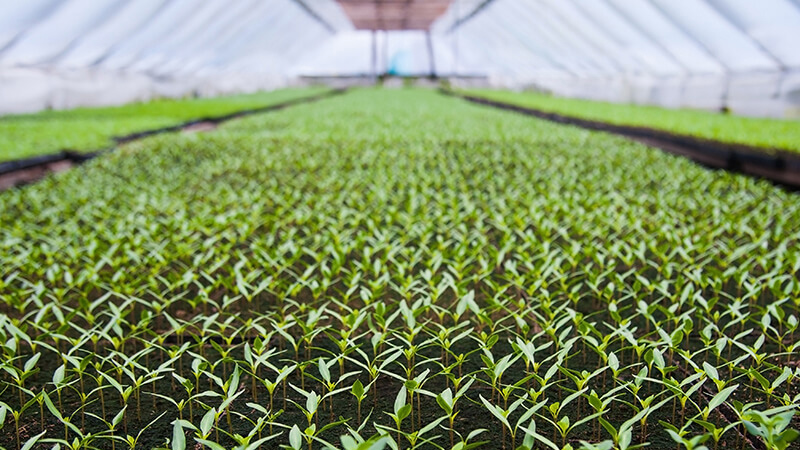Light up the Way To Greenhouse Growing Success

Greenhouse growers must master the use of energy and water. It’s the only way they will optimize crop production and cost savings. Photo courtesy of 360 Energy
Utility management is becoming the new benchmark for improving margins and product quality in the competitive greenhouse growing sector. Growers must continuously look for efficiencies to remain viable in this vitally important industry. To this end, many greenhouse operators are looking to extend their growing season with the addition of supplemental lighting.
It is not a straightforward decision to extend crop production by adding supplemental lighting. Adding lights impacts temperature and humidity in a controlled growing environment.
Temperature, light, and humidity must all work in concert to bring a crop to its peak production. No one factor can be considered on its own.
Weighing Costs and Benefits
Adding lights is a strategic decision. Supplemental lighting can easily be a multi-million dollar investment. Without readily comparable data, and without a comprehensive understanding of utility use throughout the facility, the decision can easily be costly and unsatisfactory.
Lighting incentives are available, which only complicates decision making. Utilities in some jurisdictions are offering rebates of 50% or more for greenhouse growers to install LED lighting solutions. Utilities are offering these incentives to reduce the load on their electricity grids.
LED lights might have benefits for the utility, but do they have benefits for the greenhouse owner? Are LED lights the right solution for optimal crop production?
A Whole-Systems Approach to Utility Management
The lighting spectra, installation costs, expected product lifetime, maintenance costs, and the impact to plant production have to be weighed in the decision. Incentives color the choices. Coming to the right conclusion can be difficult, but not impossible.
Ultimately, a correct lighting decision boils down to having an accurate understanding of the role utilities play in greenhouse operations. Evaluating lighting options from a utility management approach include:
- Availability and cost of energy and water
- Impact of lighting on electricity, natural gas, and water use
- Profitability of lighting used by duration and time of day
- Utility cost for each crop environment
- Availability of grid energy infrastructure
- Full lifetime cost of ownership
- Self-generation options and deployment strategies
- Subsidy assessment, qualification and submission requirements.
Lighting the way to a satisfactory conclusion requires integrating utility management into strategic decision making. A thorough evaluation will take into account the greenhouse facility itself, lighting technology performance, vendor assessment, utility procurement, energy management, best practices, and incentives review.
Many greenhouse operators have had success turning to an independent, experienced, and reputable third party for guidance and coaching through the lighting acquisition process.
As the greenhouse growing sector develops in sophistication, enterprise-wide utility management will become more commonplace. Lighting solutions provide only one example of how utility management is core to a prosperous and competitive business.









